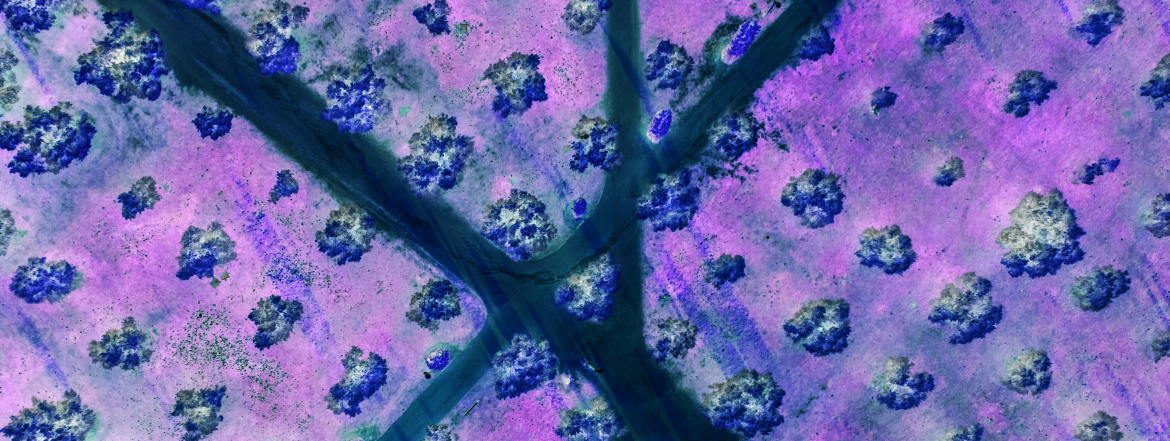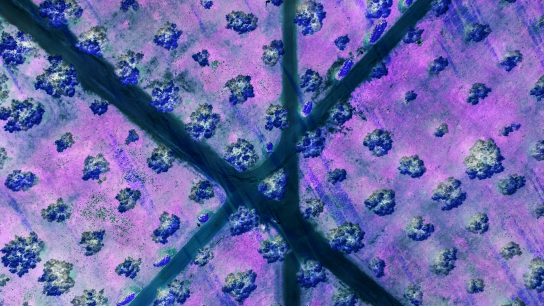States of Attrition
by
This is part of a series, Poor Theory in Three Movements, responding to the work and vitality of Poor Theory.
In the middle of the 1st base line, got my first kiss, Florencia was kind
Now, if the dozer hadn’t taken my yard, you’d see the tree with our initials carved.
—Ry Cooder,
3rd Base, Dodger Stadium, from the album “Chavez Ravine
At the 2016 Republican National Convention, where Donald Trump accepted the Republican presidential nomination, his son, Donald Trump, Jr., introduced his father and family to the nation by matter-of-factly declaring that he and his siblings are “the only children of billionaires as comfortable in a D10 Caterpillar as we are in our own cars.” In this short quip, full of Trumpian childish innocence, Donald Jr. confirmed his family’s violent history in race/class warfare (a reminder, also, that the “logic of capital” has to be produced). For nested in his seemingly simple banter is a history that, in part, this essay will seek to uncover. From World War II onwards, the bulldozer (the D10 Caterpillar mentioned by Donald Jr. is only a recent model) was rapidly transformed from a weapon of war into the “iconic instrument” of urban renewal in the United States. Urban renewal post WWII involved and relied on the bulldozing of communities—for the most part, poor communities of color—and the clearance of land to make way for massive infrastructural projects (and the real estate boom). Dodger Stadium in LA, for example, was made possible by razing the Chicana/o community at Chavez Ravine. The bulldozer became central to the transformation of the US urban landscape and the creation of the system of social inequality underpinned by spatial separation that is inherited today.
Such clearance and enclosure of land is, however, a global process and not confined to the United States alone or in isolation. From Paris to Lagos, from Rio de Janeiro to Beijing, the notion of slum clearance has long hidden a class dimension under the moral category of meliorism. Similarly, the term forced eviction might more accurately be termed militarized eviction—a historically violent form of policing. When so-called slums are bulldozed—by states or through state-authorized actions—not only are places of habitation lost, but also workshops of/for survival in the informal economy. Zygmunt Bauman noted that contemporary displacements tend to be permanent evictions from social and political life, creating superfluous populations that cannot be reabsorbed anywhere else (or more precisely, that nobody wants to reabsorb), or, in Bauman’s term, the production of “human waste” that cannot be recycled.
Today’s outcasts increasingly take desperate measures to fight against their continued expulsion. Hence the drama of sea-borne migration, most notably staged in the Mediterranean but echoed elsewhere along several littoral regions. Here, the iconic instrument is the migrant boat that represents a “right to escape” (i.e. the exercise of migrants’ claims to a subjectivity denied by expulsion). The inherent instability of the boat—its exposure to the elements and to the navies deployed to blockade and corral its movement—touches on a raw nerve. It is as if the rickety skiffs stand as a reminder to humanity of its coming fate, staging the future right there in front of our eyes: “One day, you will be on the boat.” And so, the ensuing violent and disproportionate response towards sea-borne migration might be seen as a prophylactic measure shielding from consciousness the universal consequences of human rapacity; violent repression and repulsion of sea-borne migration suppresses the reckoning that connects political violence to climate change, and social power to the environment.
The fragility of human life against forces that appear (in discourse and ideology) as unstoppable—Fate, Nature, War—is something long apprehended in places where disasters along the human-nature spectrum are experienced not as events but as conditions of life. Where catastrophes have ceased to be ruptures and are instead, as Hugh Raffles argues, the “everyday state of attrition,” social life is experienced as “a persistent teetering on the brink” (210). As a set of conditions, attrition speaks to a profound instability, or on-the-brink-ness, in social life. The everyday is marked by what AbdouMaliq Simone calls “engineered openness,” i.e. “a practice of keeping things open and possible” and a social disposition to be receptive to “new alliances, sources of information, and opportunities” (92-3). Destinations for individual lives, urban forms, or national programs end up being no more than transitory vehicles for something else. Masterplans are never completed, but are always “on hold.” This is the social defined by and constituted through temporariness and incompleteness.
That said, states of attrition are also about the new configuration of organized political violence when the centralized monopoly of force begins to fade away. Contemporary state-making increasingly takes place in and through temporariness. Notice the proliferation of temporary structures (refugee camps, processing centers, checkpoints, concrete barriers, extra-territorial passport control) that govern human circulation. A governmentality of the makeshift thus displaces modernist and developmental grand designs, as if portfolios of projects are destined to replace institutions as the foundation of political life. Increasingly also, state-making takes place in and through disruptions. By criminalizing the survival strategies of the poor (slum clearances, migration deterrence strategies) and through unannounced and unpredictable raids in urban settlements, states claim sovereignty by and through their disruptive capabilities (thus eschewing a singular focus on territoriality). Disruption is the capability, as military analysts argue, to “make invisibility difficult to achieve” for the enemy in the “ungoverned territories” of the globe. As military theorist John Boyd (architect of Desert Storm and, by one account, “the most influential military thinker since Sun Tzu”) once argued, a winning strategy should be based on this simple goal: “Collapse adversary’s system into confusion and disorder by causing him to over and under react to activity that appears simultaneously menacing as well as ambiguous, chaotic, or misleading.”
In states of attrition, Boyd’s strategy is generalized to the social field, as instability leads to an adversarial disposition. The openness that marks the everyday is at once a source of opportunities and danger due to the ambiguity of social cues and information. Can facts be taken for granted, or are they “deepfakes,” manipulated information made to look real, and more importantly, made to circulate as if they come from authentic sources? Budding journalists used to be advised to “never believe anything until it’s been officially denied.” It would be a mistake to think that the object of democratic concern should be the truth-content of the information. The point of corporate propaganda (e.g. over climate change) was never about veracity or the content of information. The masters of public relations were always concerned about their ability to create doubt and uncertainty. The aim was to exploit liberal notions of objectivity, pluralism, and reasonableness (“Have all points of view been covered?”) to undermine objectivity in its very possibility. By radicalizing uncertainty, spin-doctors could finally and brazenly declare the consumer all-powerful in the marketplace of ideas, conveniently erasing their presence in the process. If spin was always a tactic of attritional warfare, states of attrition are also conditions that defy representation: temporariness, incompleteness, and ephemera mean that concepts and theories drop out of circulation as quickly as they emerge. So, states of attrition are also conditions that don’t appear to lend themselves to theorizing.
Kinetic Thinking
How then to think of states of attrition? From where? What are their geographies? How best to capture attritional dynamics and patterning that mix social and natural phenomena? How then to think about social life from the grounds that bulldozers make unstable? What motivates those who think that a skiff can defy the mighty powers of imperial navies? How high should we build the dikes (Blade Runner 2049-style) on the coast to protect life (and property?) from rising sea levels? What is the connection between social systems and ecological systems (e.g. where urban life meets coastal ecosystems, or where segregation meets desertification)? Are such global seams more defining than (physical) borders and barriers? What is happening when something as serious as species extinction needs publicity stunts (e.g. the underwater Maldives cabinet meeting) to cause the gentlest of ripples on the surface of political life? Have we reached the point where only hyperbole can politicize social questions? Perhaps we are asking the wrong kinds of questions.
States of attrition are made for “poor theory,” or “theory shaped by being confronted always by objects and situations ‘riddled with error,’ that necessarily outpace theory,” where “the stress is neither on knowledge nor on ignorance, but on finding a relationship to what we do not know.” After all, coastal communities have long improvised forms of life built through a combination of stilts, buoys, anchors, and floating structures—practices of buoyancy (and temporariness) rather than conservation. We should not confuse poor theory with the strand of thought that proposes theorization from the margins, peripheries, islands, and/or small states (as opposed to the center, continent, and large/populous states). In the latter, fixity, sedentariness, and static emplacements are still presumed, despite the claim that decentered perspectives can produce a shift in thinking. In fact, don’t acts of decentering re-affirm the presence of a center, and at worst confirm the domination of the center. States of attrition are not characterized by polarization between two camps; instead, friction runs across multiple fault lines, existing on multiple scales.
In states of attrition, the popular phrase “think global, act local” has lost all meaning. Something like what Eyal Weizman calls a “conflict shoreline”—where a small dispute actually reveals a multi-scalar conflict between territories, peoples, agencies, and ecosystems—is more appropriate to capture the mobility (the ebb and flows, flux, etc.) of uneven geographies. Thinking, as praxis, becomes what David Theo Goldberg calls “south of theory.” It is “the thinking from and of flows,” and “theory as movement itself.” South of theory is attentive to the displacements that “southern theory” or “theory from the South” has initiated; at issue, however, is always the possibility of theory going south—a kind of “philosophy of the broken” to borrow from Alfred Sohn-Rethel’s essay about Neapolitans’ relationship to technical devices (see also). It is only when theory starts to fail that it begins to work. South of theory, qua poor theory, thus places us at the center of a kind of augmentation: things constantly break down, and they are repaired through improvised thinking and held together by repurposed objects.
Augmentation, in light of the above, is not to be confused with the grand dreams of augmented reality, but a practice that has dovetailed with and complemented humanity’s self-invention. It is emphatically not a return to nature, but the need to give augmentation its true place in human cultures. Thus, when facing the coming ecological crisis, the argument cannot be about a return to a green and pristine earth (as is somewhat evoked in notions of a “Green” New Deal, green parties, and a certain strand of environmental activism). Nor can thinking plead for a “blue humanities.” We are perhaps doomed (and responsible) to live with the toxicities that we have produced; the question will be how to filter them, how to prevent or reduce their harm, what kinds of reparations are available for those disproportionately affected by pollution, etc.? Today, the impact of an “ethos of disposability” that followed mass consumer culture has created a massive garbage problem (and industry). The bulldozer is again at the center of the “hidden life of garbage,” helping to move and bury trash in massive landfills across the planet. Meanwhile, what does not end up under the bulldozer’s blade makes its way to the plastic garbage islands across the major oceans and on the remotest of beaches.
Whither the notion of blueness for the planet? Should we be thinking of filtration systems for the seas—augmenting nature to prevent ecological catastrophes? South of theory means thinking through such modes of augmentation rather than the tendency to return to a pristine past or the modernist impulse to tear down and build anew. It means resisting a style of thought based on modeling (thinking of a model or form, followed by linear step-by-step planning of its implementation: the form makes things conform) and the kinds of theorizing that assume dystopia and utopia to be clear and distinct opposites (“socialism or barbarism,” anyone?). Here, I am thinking of augmentation as being more in line with poor theory, with its emphasis on “bricolage,” “detournement,” “improvisations,” and repurposing. Rather than plan for worst-case or best-case scenarios and model life accordingly—the subjectivity and philosophy of the doomsday prepper—theory embodies the tinkering that underpins the philosophy of the broken. The aim would be to repurpose our instruments (bulldozers, skiffs, etc.) towards livable and sustainable ends.



